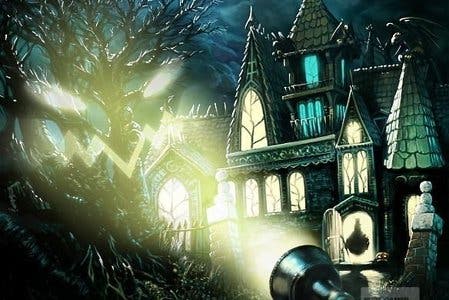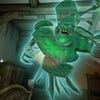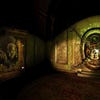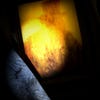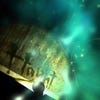Haunt Review
Trick or treat?
One of the worst side effects of the supposed battle between "hardcore" and "casual" is the need to make everything drab and serious. If a game isn't full of angst, gritted teeth, knotted muscle and grim-faced violence then it simply isn't a game. Nowhere is this more obvious than in horror gaming, as adolescent gore and po-faced melodrama have become the main signifiers of the genre.
Remember when it was possible to be spooky and fun? PaRappa the Rapper creator Masaya Matsuura obviously does. Haunt, his Kinect-exclusive ghost-'em-up developed with help from the UK's Zoe Mode, is wonderfully silly and deliciously camp. It's also sort of scary, but not in the blood-soaked manner we've come to expect.
This is horror as you experienced it as a kid. It's a theme-park haunted house, full of cheesy "boo" moments that make you jump even as you're rolling your eyes. It's Vincent Price in a cape, not Jason Voorhees with a machete. It's Halloween (the holiday) not Halloween (the movie). It's about that enjoyable chill up the spine followed by a giggle at how daft it all is.
You're playing as some hapless stooge, lured to a crumbling mansion. Inside, the spirit of the former owner, a corpulent fellow named Benjy, is trapped in the mansion's many paintings. He needs your help to retrieve four "phantaflasks" for an arcane machine that will free him from his two-dimensional prison.
So off you go, exploring the mansion using Kinect, and it's surprisingly smooth sailing. Hold an arm out in front of you to aim your torch, then walk on the spot to start moving. Moving the torch beam to the edge of the screen lets you turn around or look up and down, while focussing it on objects of interest automatically brings you close enough to interact with them. Once you're headed down a corridor, the game subtly locks you into a fixed path, mostly to ease your passage around corners and down stairs, but you're free to wander off it at any time.
The Kinect response is sturdy and mostly reliable, and the moments when it wobbles slightly are never life-or-death. It rewards big enthusiastic movements, yet is subtle enough to detect the difference between normal walking and cautious tip-toe creeping. Unlike too many other motion games, you're never struggling to register your intentions - the game keeps things simple but effective.
The environmental interactions, therefore, are predictable enough - opening doors, turning gears, pulling levers - but the world is solid and chunky enough for it to feel satisfying. There's a slightly exaggerated carnival funhouse feel to the visual style, and it's augmented with appropriately Gothic sound design. This is a game where every door creaks with sinister intent, and where every musical sting comes from an ominous piano or strident pipe organ.
Having retrieved one of the phantaflasks in the tutorial introduction, the mansion is then split into three areas, each using a different aspect of Kinect for its tricks and traps. One is all about movement, another light, and the final one sound. Pretty much everything you could think to do with the technology is covered at some point, but the game's action adventure template gives it a structure that keeps things coherent.
Each section of the mansion is split again into two stages, and progress through them means solving a basic inventory puzzle by searching rooms and collecting items, and defeating the ghosts that lurk in the corridors and cupboards.
First-person combat is an area where Kinect has dubious prior form, with the technically similar Rise of Nightmares falling apart pretty badly in this regard. Haunt, thankfully, respects the limitations of the hardware and keeps its challenges simple and effective.
There are four main ghost types to tackle, along with a sprinkling of ambient hazards littered throughout the house. In each case, you'll be dodging attacks then retaliating where relevant. You might be deflecting blobs of ectoplasm, covering your eyes or ears against spectral assault, or simply using your torch, Alan Wake-style, to fizzle their health down to nothing.
These encounters can get a touch repetitive, but Matsuura's design is canny enough to make sure you're only ever doing one thing at a time. The game is generous with signposting incoming attacks and equally benevolent when it comes to health top-ups and extra lives. Indeed, by the end of the game, I'd amassed over 15 extra lives and never needed to use any of them.
Haunt, clearly, is a game for kids, and that goes some way to justifying its lack of challenge. If the game plays it a little too safe at times, it at least means that the game is always playable, always controllable and always good, spooky fun.
Where Haunt could have tried a little harder is in the peripheries. The game quickly falls into a predictable routine and too much of the mansion is there purely for show, when a little more interactivity would have meant a lot more incentive to play around. Certain objects will react when you shine your torch on them, but given how much kids love to pull, push and prod to make things happen, it's rarely worth venturing from the expected path.
When the game does reward experimentation, the results are predictably charming. Step in front of the camera in a photography room, for example, and you'll find your picture, sepia-tinted and framed, hanging elsewhere in the mansion. The game also has some delightful camera tricks up its sleeve along with a nice use of your Avatar at the very end of the story.
There's no getting away from the fact that Haunt is a slight experience, but it's also very charming and a game that is carefully crafted to work with both the Kinect controller and its intended young audience. Not a game you'll keep coming back to, but for parents it's still worth the 800 Microsoft Point asking price for the short but sweet entertainment it offers.
